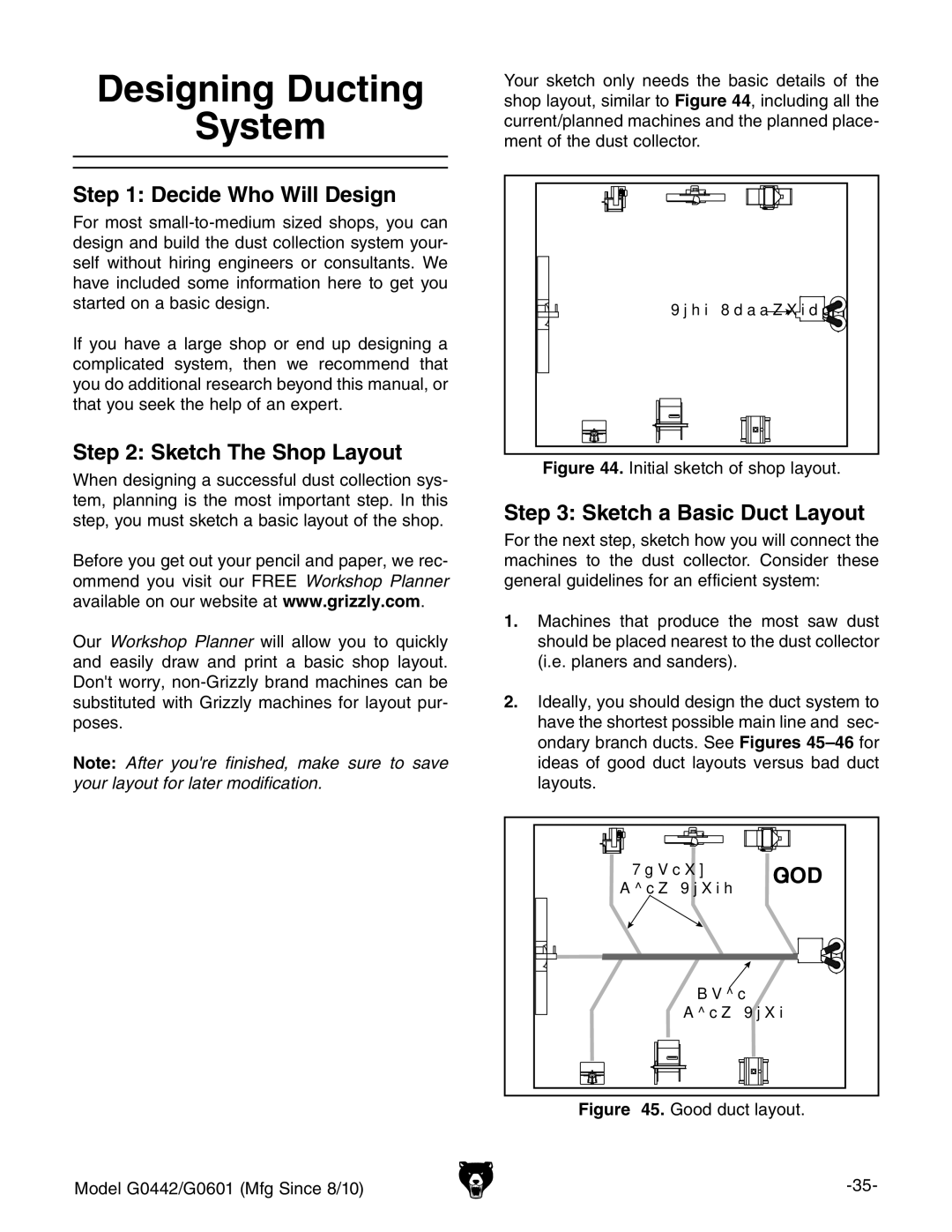
Designing Ducting
System
Step 1: Decide Who Will Design
For most
If you have a large shop or end up designing a complicated system, then we recommend that you do additional research beyond this manual, or that you seek the help of an expert.
Step 2: Sketch The Shop Layout
When designing a successful dust collection sys- tem, planning is the most important step. In this step, you must sketch a basic layout of the shop.
Before you get out your pencil and paper, we rec- ommend you visit our FREE Workshop Planner available on our website at www.grizzly.com.
Our Workshop Planner will allow you to quickly and easily draw and print a basic shop layout. Don't worry,
Note: After you're finished, make sure to save your layout for later modification.
Model G0442/G0601 (Mfg Since 8/10)
Your sketch only needs the basic details of the shop layout, similar to Figure 44, including all the current/planned machines and the planned place- ment of the dust collector.
Dust Collector |
Figure 44. Initial sketch of shop layout.
Step 3: Sketch a Basic Duct Layout
For the next step, sketch how you will connect the machines to the dust collector. Consider these general guidelines for an efficient system:
1.Machines that produce the most saw dust should be placed nearest to the dust collector (i.e. planers and sanders).
2.Ideally, you should design the duct system to have the shortest possible main line and sec- ondary branch ducts. See Figures
Branch | GOOD | |
Line Ducts | ||
|
Main |
Line Duct |
